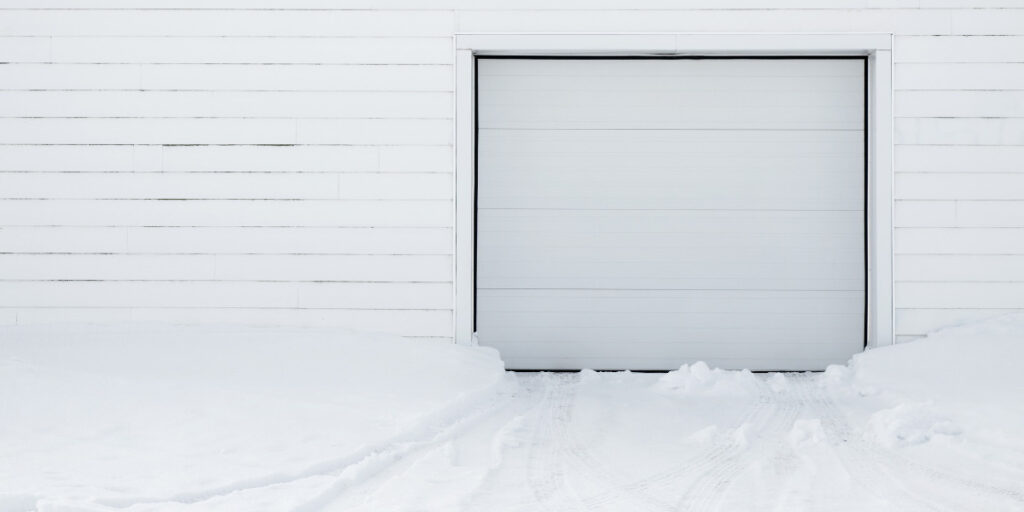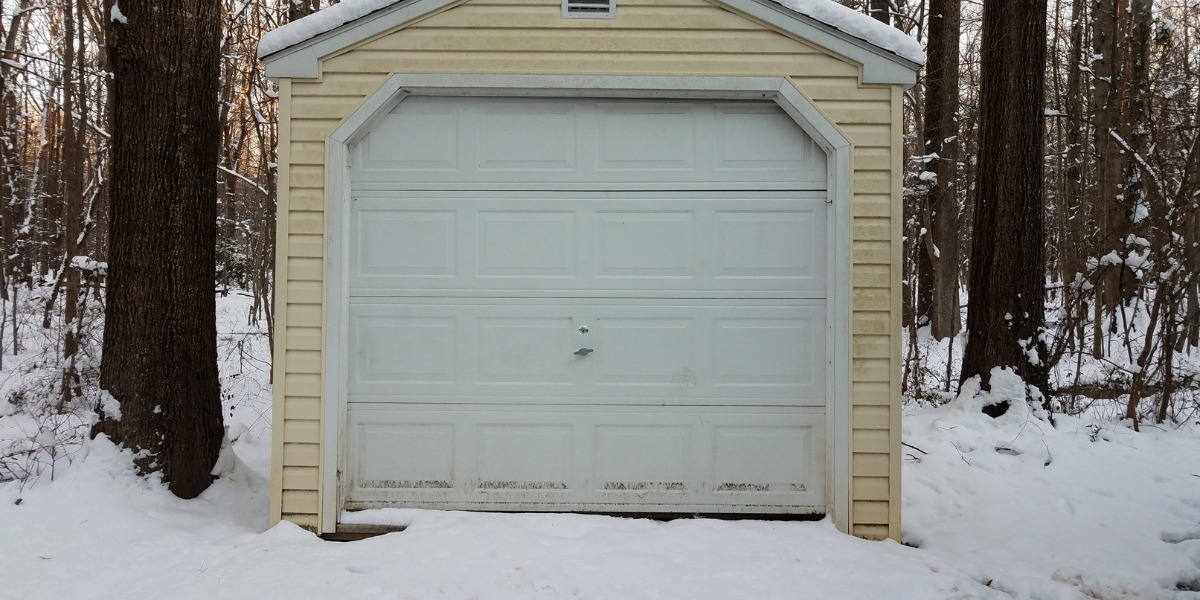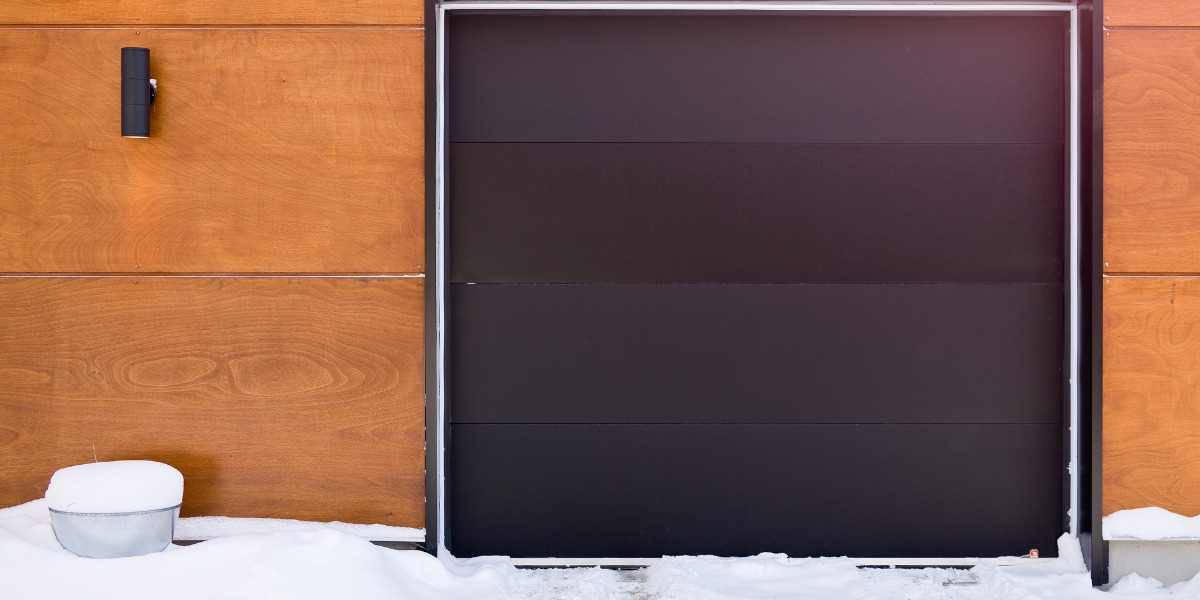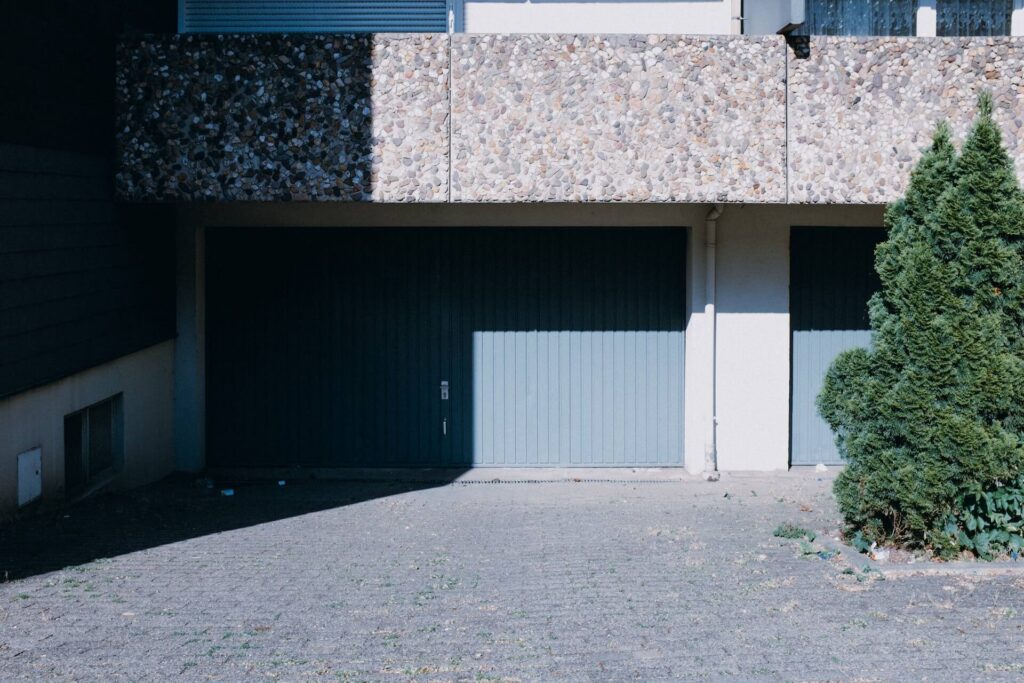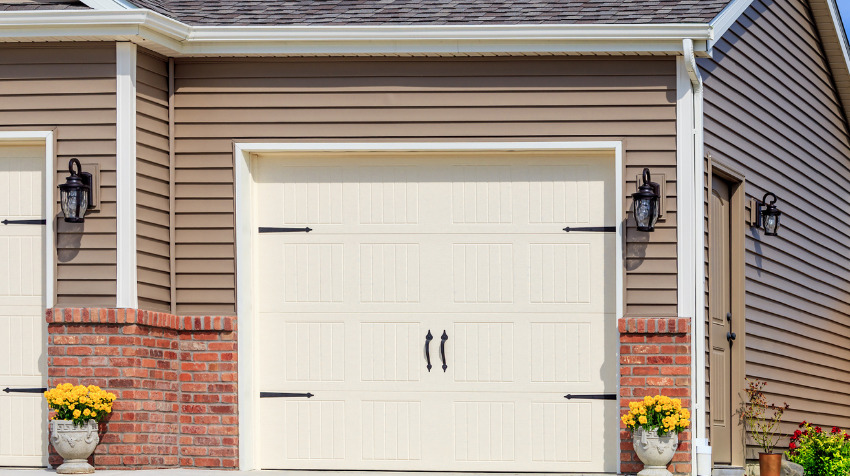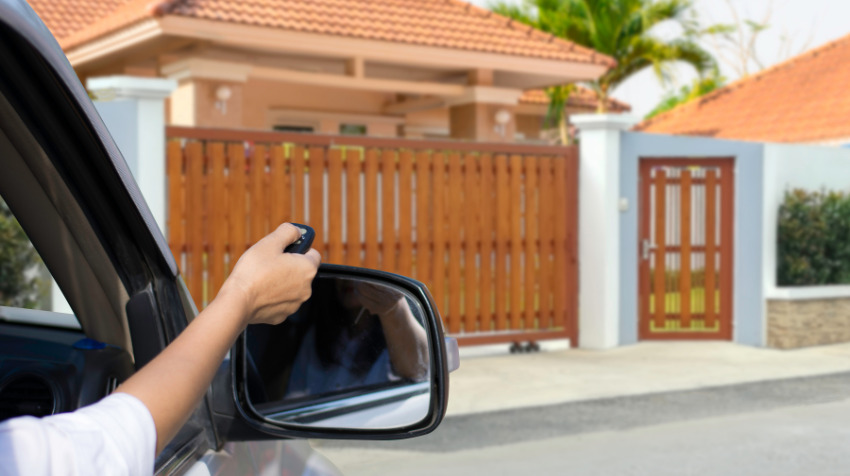Protecting Your Garage Door from Snow and Ice: Expert Tips from Garage Door Repair Caboolture
Winter brings with it a picturesque landscape of snow-covered streets and glistening ice, but beneath the beauty lies potential hazards, especially for homeowners with garage doors. Snow and ice accumulation on garage doors might seem harmless at first, but it can pose serious dangers that often go unnoticed until it’s too late. Understanding the potential risks and adopting preventative measures is crucial to protect both the garage door system and homeowners.
Garage doors are not just a convenient entry and exit point for vehicles; they also play a significant role in securing your property and enhancing curb appeal. Snow and ice accumulation on garage doors can lead to a series of problems that can compromise both functionality and safety.
While the winter wonderland outside your garage door may be enchanting, the potential dangers posed by snow and ice accumulation should not be underestimated. Understanding the risks and taking preventative measures can safeguard your garage door system, save you from costly repairs, and, most importantly, protect the well-being of your family. By staying proactive and addressing the issue before it escalates, you can enjoy a safe and functional garage door throughout the winter season and beyond.
The Impact of Snow and Ice on Garage Doors
Weight and Strain:
The Impact of Snow and Ice on Garage Doors can be significant, especially in regions with harsh winters and heavy snowfall. One of the primary concerns is the added weight that snow and ice can place on the garage door. As snow accumulates on the door’s surface, it adds a considerable load that the door’s design might not have accounted for.
Garage doors are engineered to handle a specific amount of weight, and they have components like springs, cables, and rollers that facilitate their smooth operation. However, when snow accumulates on the door, the weight can surpass the door’s design limits. As a result, the springs and other hardware may be put under excessive strain.
Excessive weight and strain can lead to various issues, such as:
- Damage to Springs: The springs in a garage door system are essential for counterbalancing the door’s weight, making it easy to open and close. When the weight exceeds their capacity, the springs may stretch beyond their limit, become loose, or even break. Broken springs can render the door inoperable and pose safety risks.
- Malfunctioning Opener: If your garage door has an automatic opener, the added weight from snow and ice can overload the motor. This can cause the opener to work harder than it’s designed for and may lead to motor burnout or circuit board failure.
- Strained Rollers and Hinges: The rollers and hinges that allow the door to move along the tracks can also be affected by the increased weight. They may wear out more quickly, leading to a bumpy or jerky movement of the door, and in extreme cases, they might even get stuck.
- Structural Damage: Prolonged exposure to excessive weight can put stress on the entire garage door system, including the panels and tracks. Over time, this strain may lead to structural damage, warping, or bending of the door itself.
Misalignment and Track Issues:
The freezing temperatures associated with snow and ice can cause another set of problems for garage doors – misalignment and track issues. As temperatures drop, the metal components of the garage door system contract. This contraction can cause the tracks that guide the door’s movement to shift and become misaligned.
Misaligned tracks pose several concerns:
- Unstable Movement: When the tracks are misaligned, the garage door may not move smoothly along its path. It might jerk, get stuck, or move unevenly, creating an unstable and potentially dangerous operation.
- Door Off-Track: In severe cases of misalignment, the door can come off its tracks entirely. This situation poses a significant safety hazard, as the door can become difficult to control and may collapse unexpectedly.
- Increased Wear and Tear: Misaligned tracks put extra stress on the rollers and other components as they struggle to navigate the distorted path. This increased wear and tear can accelerate the deterioration of these parts and lead to premature failure.
- Safety Sensors Malfunction: Modern garage doors are equipped with safety sensors that detect obstructions in the door’s path and prevent accidents. Misaligned tracks can interfere with these sensors, leading to malfunction or the failure of the safety mechanism.
To mitigate the impact of snow and ice on garage doors, homeowners should take proactive measures, such as:
- Regularly clearing snow and ice from the garage door’s surface to reduce excessive weight.
- Ensuring the garage door is well-maintained, with the springs, rollers, and tracks inspected and serviced by professionals regularly.
- Applying lubrication to all moving parts to minimize wear and tear.
- Installing weatherstripping and insulation to prevent cold air from entering the garage and reducing the chances of freezing.
Common Garage Door Problems Caused by Snow and Ice
Frozen Rollers and Hinges:
When snow and ice accumulate around garage doors, water or moisture can seep into the moving parts of the door, including the rollers and hinges. As temperatures drop, this trapped water can freeze, causing the rollers and hinges to become encased in ice. This frozen state prevents them from moving smoothly along the tracks and hinges, leading to significant hindrances in the door’s operation.
The consequences of frozen rollers and hinges on a garage door’s functionality can be quite problematic. The door may struggle to open or close properly, making it difficult or impossible for homeowners to access their garage. In extreme cases, the door may become completely stuck, leaving vehicles trapped inside or outside, creating a potential safety hazard and inconvenience for homeowners.
Furthermore, attempting to force a frozen garage door open can put unnecessary strain on the door’s motor and other components, potentially leading to motor burnout or additional damage to the door’s mechanisms. In turn, this could result in costly repairs or even require a complete replacement of the garage door system.
Broken Springs:
Freezing temperatures can cause the metal components of garage door springs to contract and become more brittle. These extreme weather conditions can weaken the springs over time, making them susceptible to breaking. The role of springs is critical in the garage door’s functioning as they bear the weight of the door, assisting in its smooth and controlled movement during opening and closing.
When a garage door spring breaks, it can have serious consequences. The door may suddenly become imbalanced, causing it to slam shut unexpectedly or potentially come crashing down. This poses a significant safety risk to anyone in the vicinity of the door, as it could lead to severe injuries or property damage.
Moreover, attempting to operate the garage door with a broken spring is strongly discouraged as it can place excessive strain on the garage door opener. The opener may struggle to lift the heavy door, leading to motor burnout or damage to other crucial components. Therefore, immediate attention and professional repair are essential if a garage door spring breaks.
Damaged Weather Stripping:
Garage door weather stripping is designed to create a seal between the door and the garage frame, preventing the intrusion of external elements such as rain, snow, cold air, and debris. Freezing temperatures can cause the weather stripping to become stiff and brittle, making it susceptible to cracking and damage.
When weather stripping becomes compromised, it loses its effectiveness in sealing the garage, allowing cold air and moisture to seep inside. This not only makes the garage environment uncomfortable but also affects the overall energy efficiency of the house. The temperature within the garage can drop significantly, making it harder to maintain a comfortable indoor temperature in adjacent living spaces.
Furthermore, damaged weather stripping may lead to water and moisture infiltration into the garage. Prolonged exposure to moisture can potentially damage items stored in the garage, such as tools, equipment, and other belongings. Additionally, the presence of excess moisture can create a conducive environment for mold and mildew growth, which can be harmful to both the garage structure and the health of occupants.
Safety Concerns for Homeowners
Blocked Emergency Exits:
- Snow and Ice Accumulation Hazards: During the winter months, homeowners face the risk of snow and ice accumulation around their homes. While it creates a picturesque scene, it can also pose significant safety concerns. One critical issue is the potential obstruction of emergency exits. These exits, such as doors and windows, are crucial pathways for a quick escape in case of emergencies like fires, gas leaks, or other hazardous situations.
- Hindered Escape Routes: When snow and ice accumulate near emergency exits, it can make it challenging to open doors and windows, hindering homeowners from escaping quickly and safely. This delay can be life-threatening during a critical situation when every second counts. Imagine trying to push open a door blocked by a heavy layer of snow or dealing with frozen shut windows when you need to escape immediately. Such impediments can lead to panic and accidents, jeopardizing the safety of everyone inside the house.
- Importance of Accessibility: Homeowners must prioritize the regular maintenance and clearing of snow and ice from emergency exits. Clear paths around doors and windows are essential to ensure easy access in case of emergencies. Designate someone responsible for this task during winter, and keep the necessary tools, such as shovels and ice melt, readily available.
- Clear Emergency Exit Plan: Apart from maintaining accessibility, it is vital to have a well-thought-out emergency exit plan in place and ensure that all family members are aware of it. Conduct regular drills to practice the escape routes, especially during the winter season. Knowing the quickest and safest way out can make a significant difference during an actual emergency.
Risk of Garage Door Collapse:
- Weight of Snow and Ice: During winter storms, snow and ice can accumulate on the roof of the garage and the garage door itself. The weight of this accumulation can become significant, exceeding the load capacity that the garage door was designed to handle. As a result, the door’s structural integrity may be compromised, leading to potential collapse.
- Dangers to Vehicles and Property: A collapsed garage door poses a severe threat to vehicles parked inside. The weight of the falling door and debris can cause extensive damage to the vehicles, including crushing them entirely. Additionally, the collapse can damage any items stored in the garage, such as tools, equipment, and valuable possessions.
- Safety of People Nearby: The collapse of a garage door doesn’t only endanger property; it can also harm people nearby. If someone is standing close to the garage when the door collapses, they could be seriously injured or even killed. Children playing in the vicinity of the garage are especially vulnerable to such accidents.
- Preventive Measures: Homeowners must take proactive measures to prevent garage door collapse due to snow and ice accumulation. Regularly inspect the garage door and its components, paying attention to any signs of wear or damage. It’s essential to have the garage door professionally maintained and repaired if necessary. Additionally, consider installing a garage door designed to handle harsh weather conditions, including heavy snow loads.
- Clearing Snow from Garage Roof: To mitigate the risk of collapse, homeowners should make efforts to clear snow and ice from the garage roof as soon as possible after a winter storm. However, this task can be dangerous, so it’s important to exercise caution and use appropriate safety equipment when attempting to remove snow from the roof.
Preventative Measures to Safeguard Garage Doors
Regular Maintenance:
Regular maintenance is crucial for ensuring the longevity and proper functioning of garage doors. Homeowners should be made aware of the significance of scheduling routine inspections and tune-ups. These inspections can help identify and address potential issues early on, preventing costly and inconvenient problems in the future. Encourage homeowners to hire professional technicians for thorough assessments as they are trained to spot even minor problems that might be overlooked by untrained eyes. During these inspections, technicians can check for worn-out components, loose bolts, misalignments, and any signs of wear and tear. By addressing these issues promptly, the garage door’s overall performance and safety can be greatly improved.
Proper Lubrication:
Regular lubrication of the garage door’s moving parts is vital for smooth operation and preventing freezing during colder months. Explain to homeowners that lubricating hinges, springs, rollers, and tracks reduces friction, which can otherwise lead to excessive wear and noise. The proper lubricants should be recommended for different components. For example, silicone-based lubricants work well on plastic and nylon parts, while white lithium grease is suitable for metal components. Encourage homeowners to follow the manufacturer’s guidelines for lubrication intervals and always wipe off any excess lubricant to avoid attracting dirt and debris.
Clearing Snow and Ice:
During winter, snow and ice can accumulate around the garage door, hindering its proper operation and potentially causing damage. Provide safe methods for homeowners to remove snow and ice without causing harm to themselves or the door. For instance, they should be advised against using sharp objects like shovels or ice picks directly on the door, as this can scratch or dent the surface. Instead, recommend using a soft broom to gently brush off accumulated snow and applying a de-icer to melt ice. Additionally, homeowners should be informed about the importance of clearing the area around the garage door’s tracks to prevent obstruction and ensure smooth opening and closing.
To prevent ice buildup on the door’s surfaces, suggest using a silicone-based spray on the door’s exterior. This creates a thin, protective layer that makes it harder for ice to adhere to the surface, making snow and ice removal easier. Homeowners can also install gutter systems above the garage door to direct melting snow away from the door, preventing potential freezing and damage.
Insulated Weather Stripping:
Advise homeowners to invest in high-quality, insulated weather stripping for their garage doors. Insulated weather stripping serves as a barrier against external elements, including extreme temperatures, rain, and drafts. By keeping the garage better insulated, it can contribute to energy efficiency and lower heating or cooling costs if the garage is connected to the house. Encourage homeowners to inspect the weather stripping regularly and replace it if there are signs of wear or damage.
Frequently Asked Questions
How can snow and ice be dangerous for garage doors?
Snow and ice can pose various risks to garage doors. The weight of accumulated snow or ice can strain the door’s springs, cables, and other hardware, potentially leading to damage or even a complete malfunction. Additionally, freezing temperatures can cause the door’s components to contract, impacting its functionality.
Can snow and ice cause a garage door to get stuck?
Yes, snow and ice can cause a garage door to become stuck or frozen shut. When snow or ice builds up around the door’s tracks, rollers, or weather seal, it may prevent the door from moving smoothly, resulting in difficulty opening or closing the door.
How can I prevent snow and ice buildup on my garage door?
Regular maintenance and proactive measures can help prevent snow and ice buildup on your garage door. Keep the area around the door clear of snow and ice. Remove snow from the roof of the garage to avoid it falling and piling up around the door. Install proper weather seals and use a silicone-based lubricant on the tracks and rollers to reduce the likelihood of ice forming.
What should I do if my garage door is frozen shut?
If your garage door is frozen shut, avoid forcing it open, as this could cause damage to the door or the opener. Instead, try using a hairdryer or heat gun to melt the ice around the seal or use a de-icer that is safe for garage door components. Alternatively, you can pour hot water around the edges of the door to help melt the ice, but be cautious about using boiling water, as it could damage the door’s seals.
Can snow and ice damage the garage door opener?
Yes, prolonged exposure to extreme cold or attempting to operate a garage door with excessive snow or ice buildup can strain the garage door opener. The motor and other electronic components may struggle to function correctly under such conditions, potentially leading to malfunctions or premature wear.
Conclusion
We cannot emphasize enough the importance of pro activity when it comes to winter-related garage door issues. Being proactive in addressing maintenance concerns and promptly seeking professional help when needed can save you from costly repairs and ensure the safety of your loved ones and possessions.
As the winter season approaches, take the time to assess your garage door’s condition and implement the necessary precautions. Your garage door plays a significant role in safeguarding your home, and by taking preventative measures, you can enhance its longevity and functionality.
In conclusion, let us all be responsible homeowners, acknowledging the potential dangers winter can pose to our garage doors, and commit to maintaining a safe and functional garage throughout the cold months. By following these simple steps and seeking professional assistance when necessary, we can keep our garage doors in top-notch condition and enjoy a worry-free winter season. Remember, a well-maintained garage door not only protects your vehicles and belongings but also contributes to the overall security and comfort of your home. Stay safe, stay proactive, and have a wonderful winter!

